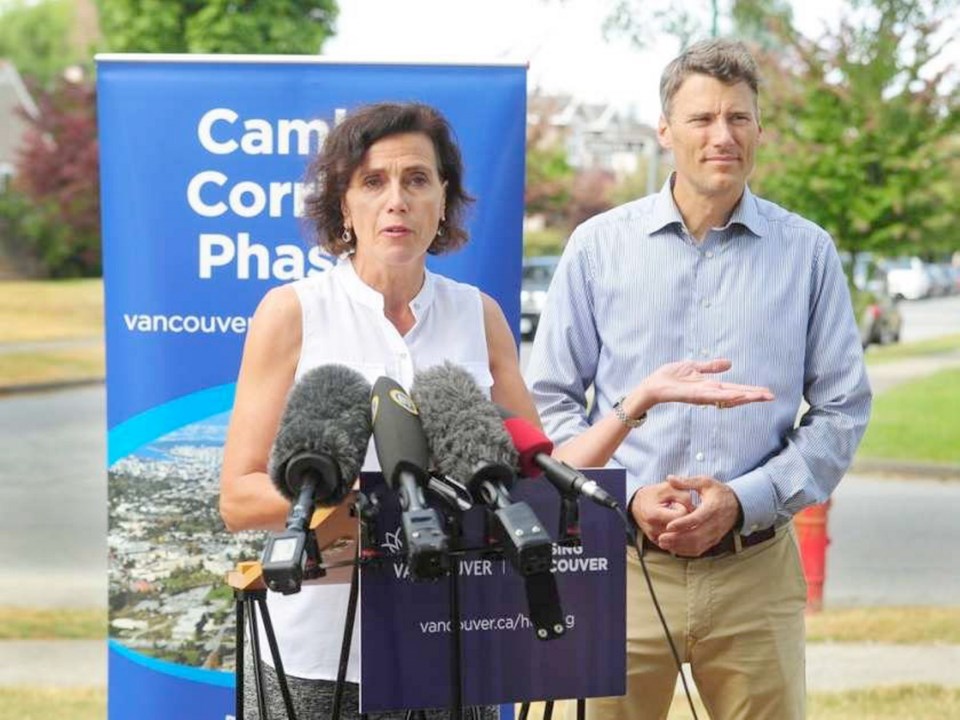The City of Vancouver has unveiled a pilot project to boost the supply of affordable rental housing in the Cambie corridor.
On Sunday, Mayor Gregor Robertson said the city hopes to use an inclusionary zoning proposal to provide 1,000 affordable rental homes in the Oakridge Municipal Town Centre.
The homes would be reserved for renters with household incomes of $30,000 to $80,000 and designated as “long-term affordable.” To meet that benchmark, rents would be no more than 30 per cent of that income.
Developers would receive a “density incentive” in exchange for meeting the city’s below-market affordability benchmark on 20 per cent of their units.
“All new rental rezoning projects must include at least 20 per cent affordable, low-income housing at rents below market,” said Robertson.
If the pilot project in the Oakridge area is expanded, Vancouver would be the first city in Canada to have a requirement where at least 20 per cent of rental units are available at below market rents.
Susan Haid, assistant director of planning for the city, said the city’s “incentive options” for developers include greater density, relaxed parking requirements and development cost levy waivers. Increased density would be “explicitly for provision of rental and social housing in a really livable manner,” said Haid. Amenities such as with a plazas, parks, green streets, civic centres and bike paths would also be required.
Haid said the Oakridge pilot program will include a variety of housing including townhouses, low-rise, mid-rise and highrises connecting to Oakridge Centre mall.
Mid- and highrise housing in the area would have to be either 100 per cent rental, with 20 per cent of those units meeting the below-market affordability benchmark, or a blend of 30 per cent social housing units and 70 per cent strata or condo units.
Haid said the plans were made in part based on feedback from public consultations in order to target the “missing middle generation, our young families and our seniors.”
Robertson said the initiative is part of the city’s “housing reset” strategy. “Given the housing crisis we want to be nimble rolling this out, we do want to see if this initial test at the scale of Oakridge Town Centre and getting over 1,000 units at below market rents — as soon as there is a clear indication that this program is workable and we’re seeing the rents stabilized and a program to administer that, then I think we’d look at rolling it out across the city.”
Pat McSherry from Metro Vancouver Alliance, a group that advocates for “inclusionary zoning” wants affordable housing to be a requirement in all new developments. McSherry said the Oakridge pilot program is a good first step.
Adrian Crook, a housing advocate from Abundant Housing Vancouver, was cautiously optimistic after the announcement. “Overall, this is positive. What we are lacking is an idea of how this fits into a big picture. We don’t have any measurement for success. The city hasn’t outlined what they are targeting. Are they targeting a three per cent vacancy rate? What is the time frame? We get these incremental tests and pilot projects. It’s hard to say how they add up and fit into the big picture.”



